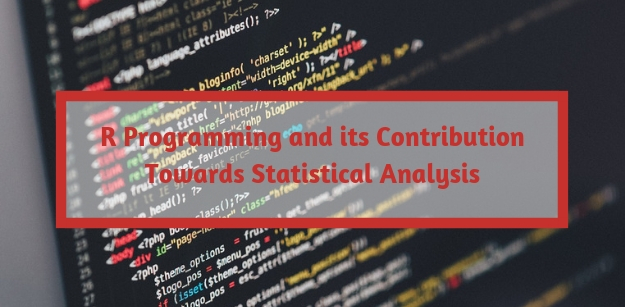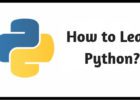Statistics is an excellent wing of mathematics that solely lays its emphasis on data and its management such as, collection, interpretation, analysis, organization, and presentation. Before applying Statistical analysis on data, first, it’s important to know about statistical population or statistical model process to extract accurate information.


To draw some better inferences from a large pool of data and to make educational guesses, “Statistics” accomplishes the job. Mostly used averages are mean, mode and median. To have brief but a relevant overview, we’ll have three essential concepts to learn:
- Statistic Features
- Probability Distributions
- Bayesian Statistics
- Up-Sampling
- Down Sampling
- Dimensionality Reduction
These are a few non-negotiable, not to be undermined fundas for every data scientist to put the focus on. For instance, we’ll discuss an example later in this article to have a better understanding of the above topics where we’ll take a dataset of loans that was issued to people in the time interval of 2007 – 2015.
It’s hard to understate how crucial is Statistics in Data Science, and so does in the R Programming Language. The term data science was first time introduced in 1996 in the title of a statistical conference of IFCS-96. The title was “Data Science, Classification, and Related Methods.”
Data Science started up with Statistics much earlier as compared to the concepts of Machine Learning and Artificial Intelligence which are the later inventions and from the data analysis point of view, R programming is an extremely crucial link to master in Statistics.
What is Statistics?
Statistics is a collection of procedures and principles for gaining information to make decisions when faced with uncertainty. I should have given a shot during my first learnings! Alas.
Understanding the statistics is a great significant part of Data Science. There are many textbooks and graduate level programmes to master this branch of mathematics.
While refining data, R Programmers can:
- Identify the risk factors for any domain like business, medicine, F1 sport, etc
- Customize the spam detection
- Establish the relationship between variables
- Demographic surveys
Thus, they save the world; angels at the rescue!
Data Scientist’s persona!
Think of a programmer who’s better in statistics and a statistician who’s better at programming.
For a better statistician, R programming compliments his doings.
The Robust ‘R’
R programmers can gain more profound insights to know how the data is structured and based on this skeleton we can apply other data science techniques to grab more relevance and promising results.
R is a language built for a specific purpose. It is strictly designed for statistical analysis. The algorithms for many statistical models are devised in R. Precisely R is the language of Statistical Analyzers.
It’s an open source and the best suite for the statisticians to develop statistical softwares.
Coding in R is too comfy. It’s like buttering the bread. The syntices of R are easy to remember. It’s functional and procedural language. On top of it, R provides the luxury of OOPs.
The story does not end here, R is accepted by Data Scientists too. It’s just because it’s too smooth. It provides another level of appeasement to coders. There are numerous libraries which make the job of data science way too flattering.
The demand of R Programmers
R is on the huge market in India. It drives crazy the mid-level companies. Even the overlords of industry gaze their eyeballs on this skill. The proficiency in developing code in R and mind-boggling abilities to handle/tackle the task of statistics is what required.
The demand of marvelous R coders has risen the stakes not only get hired but also snatch mouth watering paychecks. Python developers and R statisticians have entirely lowered the par of selection.
The coders of R do get a good bag of money at the end of the month.
The R Programmers usually or often do the Statistics to draw the bigger picture like some of the statistical techniques they always impose on every problem to study are; Statistical features, Probability distributions, Bayesian Statistics.
Let’s go deeper inside and see why the hack, they use above 3.
Statistical Features
This will teach us the type of people who received loans, whether or not their credit score was appropriate for claiming loans. Perhaps we can create a model that can better predict the credit score using Statistics techniques in Machine Learning
So talked example well! Loan grant. So the programmer first devises a boxplot (a standard way to display the distribution of data based on a few statistical features).
Boxplots are the easiest way of visualizing these features. The line in the middle is the median value of data; we use the median because it’s the foremost robust to mean and outliers in data, maximum and minimum values depicts our range.
If boxplot is short, this means that our data points are generally similar, and if it’s tall, then it implies data points are different since the values are more spread out.
Probability Distributions
Probability tells us the occurrence. Usually, its quantified between 0 and 1, where 0 means inevitably ‘NO,’ it won’t occur, and 1 means absolutely ‘YES,’ it will happen. The probability distribution is a function that tells us all possible values in an experiment.
Uniform distribution tells us the specific value 0/1 either on or off, while normal distribution is specifically designed by its mean and standard deviation with this we know the average value of our dataset and how it is spread.
Similarly, Poisson distribution has one added thing, and that is the ‘skewness.’ When skewness is high the spread of data will be different in different directions
Bayesian Statistics
Apart from frequency statistics, Bayesian facilitates you to add the specific event occurred and takes into account.
Suppose you had dice and asked what’s the probability of getting 6. The simple answer would be ⅙ or 0.166. But what if a particular dice have been introduced into a game which will always land on 6.
Bayesian provides the cure with second instruction considered as the second event with respect to the first one.
P(A|B) = (P(B|A) P(A))/P(B)
Let me share one universal fact:
The zeal in developers is much more than the other employees. For some, it’s not acceptable, and this fact won’t even be sip by those lads. But it’s the bitter truth.
The requirement is not only in the IT industry but also in training institutes, schools, colleges too.
The Game Changer
R has proven its credibility and authority. It entirely has changed the game of developing world and perspective to learning. Its shoes do have struck in the mud of Big data, but the community is day and night working to resolve this significant issue.
In no time it’ll be the best friend of Python. The real reason for R gaining massive fame and popularity is that it’s scalable. Before R there were other tools too that can perform the same task but the scalability feature knockouts all others.
R is putting utmost efforts to walk parallelly to Python.
The reliance of both Python and R is going to affect the data world hugely. From last few years, the bracket of R users is not enclosing.
The industry of good statisticians is increasing day by day, and so is R programmers.
From the business point of view, the demand of data scientists and analysts is peaking. The newbies who want to make Data Scientist or Data Analyst as their career are opting for Python and R sharply.


